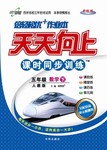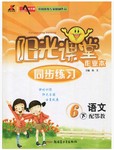题目内容
One day, a teacher was speaking to a group of students about how to manage time. He gave such an interesting example that his students would never 1 .
He put a wide-mouth jar (罐子) on the table. Then he 2 some rocks and carefully placed them into the jar, one at a time. When 3 rocks would fit inside, he 4 , “Is this jar full?”
Everyone in class shouted, “Yes.” “Really?” The teacher pulled out a bag of small stones. He put 5 small stones in and shook the jar. The small stones went 6 into the spaces between the big rocks. He then asked the group 7 , “Is this jar full?”
“Probably not,” one of them answered. “Good!” the teacher replied. He brought out a box of sand and 8 some sand into the jar and it went between the rocks and small stones. Again he asked the 9 question, “Is this jar full?
“No,” the class shouted. Once more the teacher said, “Good.” He poured a cup of water into the jar 10 it was full. The he asked, “What is the point here?” One student 11 his hand and said, “The point is that if you try really hard, you can 12 put more things in.”
“No,” the teacher replied, “that’s not the 13 . What I want to tell you is that if you don’t put the big rocks in first, you will never get others in at all. 14 are the ‘big rocks’ in your life? Time with your friends, your education or your dreams? Remember to put the 15 in first, or you’ll never get others in at all.?”
He put a wide-mouth jar (罐子) on the table. Then he 2 some rocks and carefully placed them into the jar, one at a time. When 3 rocks would fit inside, he 4 , “Is this jar full?”
Everyone in class shouted, “Yes.” “Really?” The teacher pulled out a bag of small stones. He put 5 small stones in and shook the jar. The small stones went 6 into the spaces between the big rocks. He then asked the group 7 , “Is this jar full?”
“Probably not,” one of them answered. “Good!” the teacher replied. He brought out a box of sand and 8 some sand into the jar and it went between the rocks and small stones. Again he asked the 9 question, “Is this jar full?
“No,” the class shouted. Once more the teacher said, “Good.” He poured a cup of water into the jar 10 it was full. The he asked, “What is the point here?” One student 11 his hand and said, “The point is that if you try really hard, you can 12 put more things in.”
“No,” the teacher replied, “that’s not the 13 . What I want to tell you is that if you don’t put the big rocks in first, you will never get others in at all. 14 are the ‘big rocks’ in your life? Time with your friends, your education or your dreams? Remember to put the 15 in first, or you’ll never get others in at all.?”
| 小题1: |
|
| 小题2: |
|
| 小题3: |
|
| 小题4: |
|
| 小题5: |
|
| 小题6: |
|
| 小题7: |
|
| 小题8: |
|
| 小题9: |
|
| 小题10: |
|
| 小题11: |
|
| 小题12: |
|
| 小题13: |
|
| 小题14: |
|
| 小题15: |
|
小题1:C
小题2:B
小题3:A
小题4:C
小题5:D
小题6:C
小题7:B
小题8:B
小题9:A
小题10:B
小题11:C
小题12:A
小题13:A
小题14:B
小题15:C
试题分析:这篇短文中老师通过一个小实验给学生们讲述了一个深刻的人生道理,我们必须抓住人生的重点,才能获得更大的收获。
小题1:联系下文,可知他给学生们举了一个他们永远不会忘记的例子。故选C,忘记。
小题2:联系下文,可知他拿出一些石头,故选B,拿出。
小题3:短语辨析。A.副词短语,不再;B.形容词短语,没有更多的;C.无此说法;D.不多,少数。联系下文,可知此处指的是,当石头再也装不进去了,故选A,副词短语,不再。
小题4:联系下文,可知此处指的是他问。故选C,问。
小题5:联系下文,可知他有放进了一些小石头,few表示否定含义,很少几个。any也表示一些,但是用于疑问及否定句当中。故选D,一些。
小题6:结合语境可知此处指的是这些小石头向下进入罐子里面,故选C。向下。
小题7:联系上文,可知此处指的是他又问,故选B,又,再。
小题8:联系上文,可知此处指的是他又把一些沙子放进了罐子里面,故选B,放。
小题9:联系下文,可知这个老师又问了一个相同的问题,故选A,相同的。
小题10:连词辨析。A.自从……以来;B.直到;C.然而,当……时;D.因为。联系下文,可知此处指的是他往这个罐子里面倒了一杯水,直到它满了。故选B。
小题11:结合语境可知一位学生举起了他的手,故选C,举起,提高。
小题12:副词辨析。A. 总是;B. 已经;C.从来不;D.几乎,简直不;结合语境可知句意为:你总是能放进更多的东西。故选A。
小题13:联系上文,可知此处指的是这不是要点,故选A,要点,问题,关键点。
小题14:联系下文,可知此处问的是,什么是你生活中的“大石头”?故选B,什么。
小题15:联系上文描述,可知此处指的是先放进这些大石头,故选C,大石头。
点评:这篇短文内容比较简单,理解不难。各小题与上下文联系比较紧密,答题中一定要注意联系上下文。答完后多读几遍,看看是否符合逻辑,适当修改。个别小题可以当作单独的词义辨析题来做,先区分词义,结合语境选出最能使语句通顺的答案。

练习册系列答案
 天天向上课时同步训练系列答案
天天向上课时同步训练系列答案 阳光课堂同步练习系列答案
阳光课堂同步练习系列答案
相关题目
